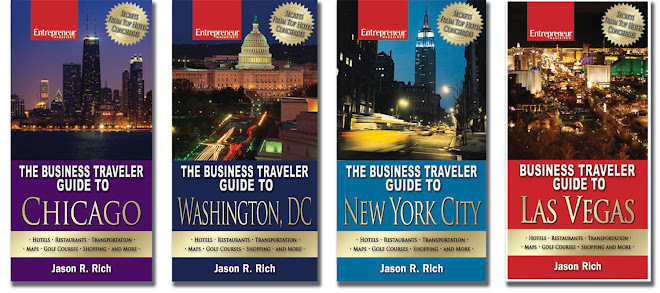
The first step to choosing appropriate luggage is to determine your needs. Figure out what you’ll be carrying and how long you typically travel for (from one to three days, from three to five days, or a week or longer). In your checked luggage, will you be packing several business suits that can easily get wrinkled or more casual attire? Knowing this will help you determine the size, design, and number of bags you should purchase to meet your unique needs.
TIP: Many pieces of luggage from high-end companies, such as Tumi (www.tumi.com) or Orvis (www.orvis.com), have seperate compartments designed to hold suits and other clothing that you want to remain wrinkle-free.The luggage you ultimately select should be easy to transport. After all, you’ll need to navigate your way through busy airports, down long hotel hallways, and in and out of cars or taxis. Doing this with poorly designed luggage can put added stress on your back, neck, and arms. Plus, you don’t want your luggage to fall apart mid-trip.
Soft-sided luggage with durable wheels is ideal for most travelers. This type of luggage tends to weigh less, which is important, since all major airlines now have strict weight restrictions for checked luggage. Bags weighing more than 50 pounds are each subject to a surcharge of $25, $50, $100, or more, depending on the airline.
Passengers are also limited to checking only one or two bags (depending on the airline). Each additional bag is subject to a fee of $50, $100, or more. It’s important that the luggage you choose be able to hold everything you’ll need to have with you, yet meet your airline’s requirements.
The construction of a bag is as important as its design. Ideally, you want luggage designed to take a beating, yet remain strong. You’ll pay a bit extra for bags with strong and padded handles, durable wheels that glide smoothly, well-sewn seams, heavy-duty zippers, and that are made from extra-strong material - such as ballistic nylon or napa leather. But over the long-term, these bags will last much longer and keep their contents safer.
When evaluating luggage, consider the interior design of each bag. Does the luggage have enough pockets and compartments to accommodate your needs? Will it allow you to keep your toiletries separate (in case of spillage)? Also, is the bag comfortable to carry or pull? Are the handles durable, padded, and located in the best possible places?
By visiting a specialty luggage store or high-end department store, you’ll be able to see top-quality, name-brand luggage from a variety of manufacturers. Remember, when it comes to the price of the bag, make sure you’re paying for top-quality construction, not just for a designer name.
Each popular luggage manufacturer typically offers several product lines with different looks, color-schemes, designs, and levels of construction quality. If you take only one trip per year, you may be able to purchase less expensive and lower quality luggage. However, if you travel often, you should invest in durable luggage that will last.
TIP: If you’re buying luggage with wheels, make sure the wheels are well-made, spin smoothly, are quiet when they roll, and don’t wobble. Remember, when the bag is full, you’ll be pulling or carrying up to 50 pounds. Also, focus on the construction of the bag’s handles and zippers, as well as the material used for the bag’s overall construction. The last factors to consider are the look of the bags and the color scheme, as well as how the various bags in the set interconnect for easy transport. Just because the manufacturer offers a set of luggage with five or six bags in different sizes and styles, this doesn’t mean you need all these bags. Pick and choose the bag styles that best meet your needs. Many larger bags on wheels have hooks that allow you to easily attach smaller bags.
As soon as you’ve purchased your luggage, make sure you fill out and securely attach luggage tags with, at least, your full name and phone number. (Listing your address and cell phone number are optional.) It’s also important to place your contact information inside each checked bag. This will make it easier to recover your belongings if the bag gets lost in transit or the luggage tag falls off.
When shopping for luggage, check out luggage sets by several manufacturers. Be sure to ask about the luggage’s warranty and determine the process for getting bags repaired. Some luggage companies charge a minimum of $100 per bag (plus shipping), even for a basic repair.
Remember, many bags from different manufacturers look very similar but have a very different construction quality and overall value.







